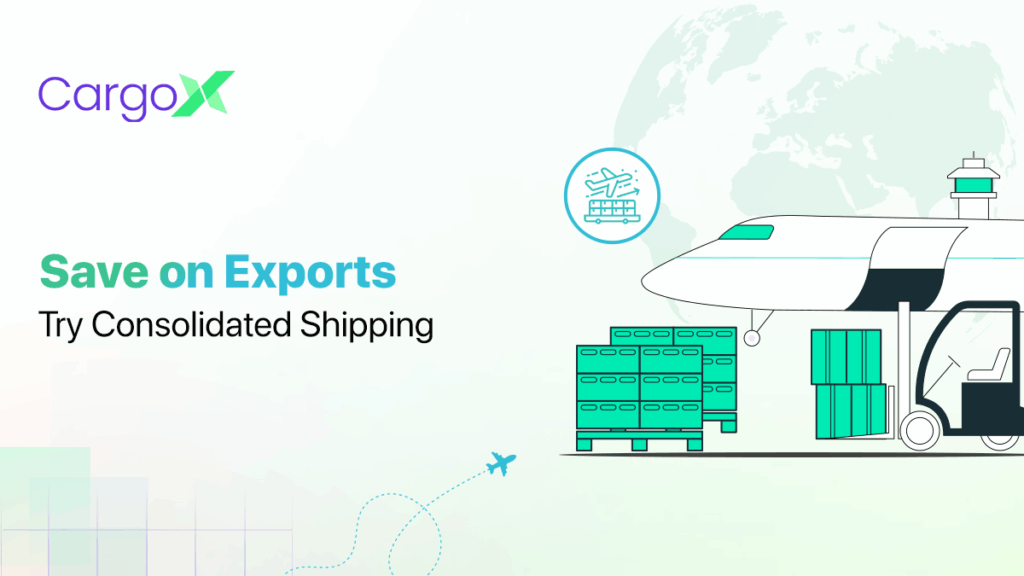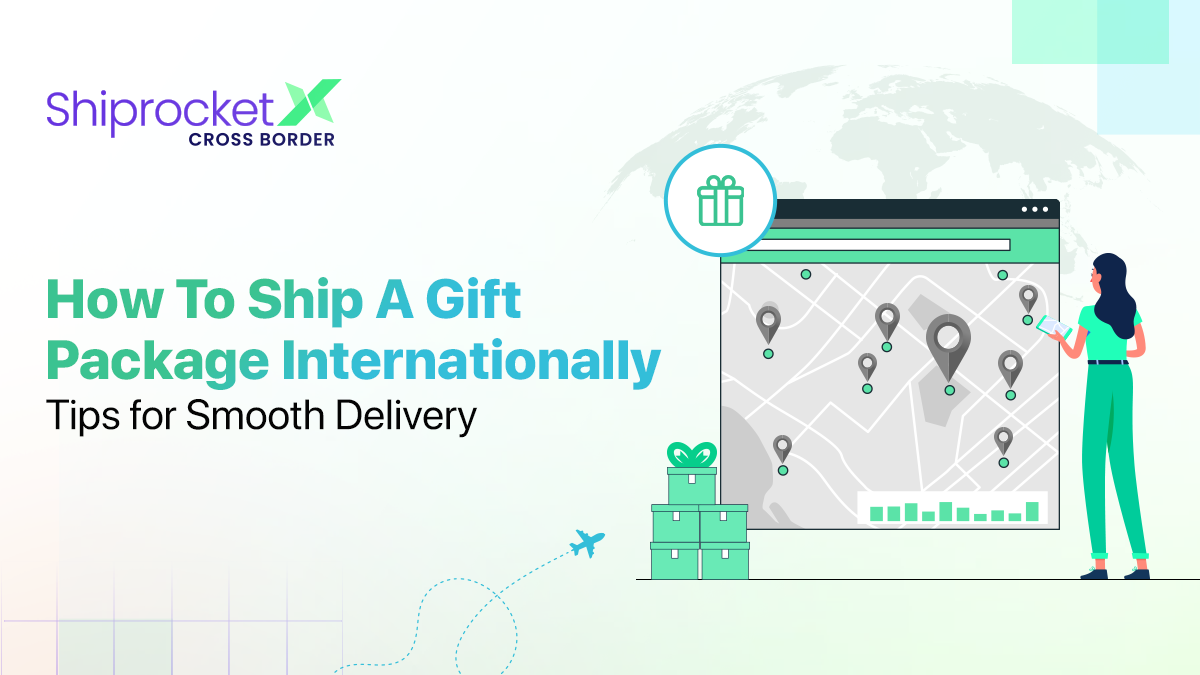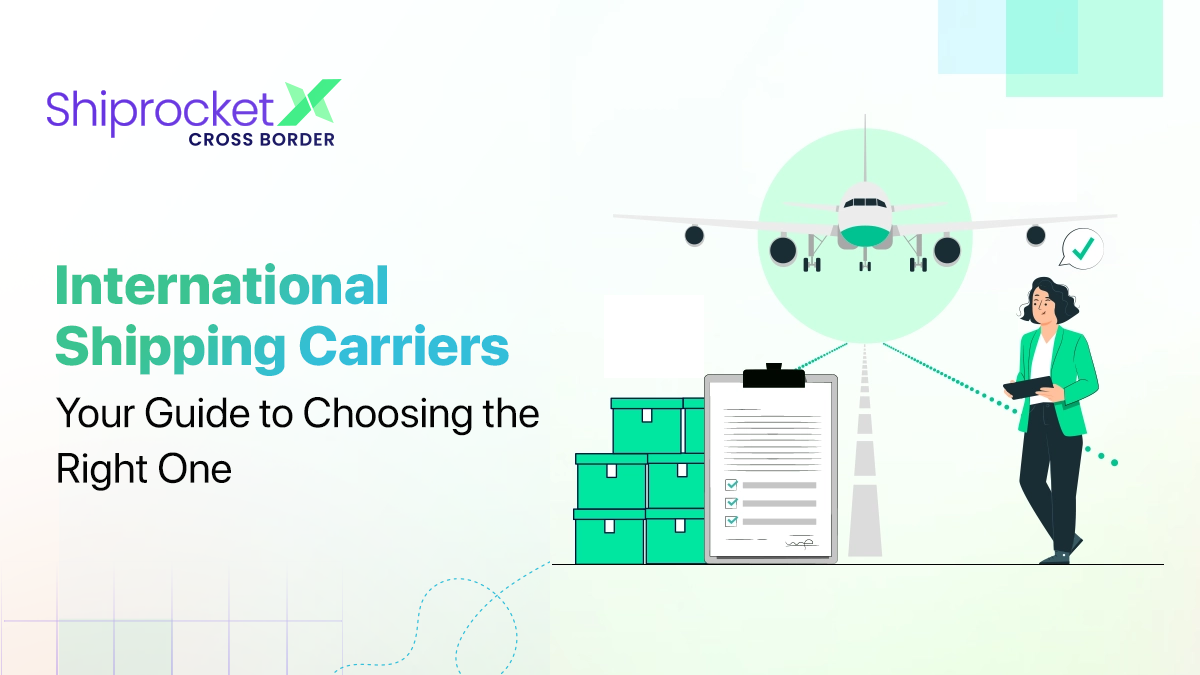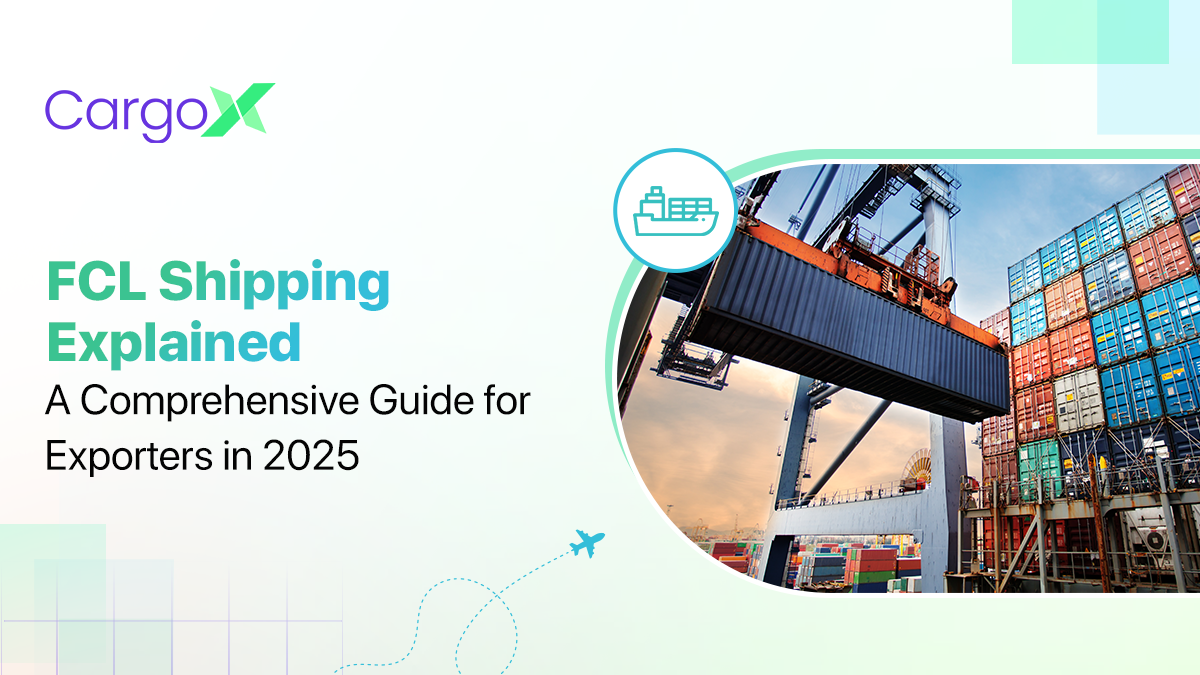Consolidated Shipping Explained for Exporters
If you’re planning to expand your eCommerce business cross-border, exporting goods may cost you dearly. It can be a major challenge to manage everything from different carriers to dealing with unpredictable shipping expenses. Nonetheless, this hiccup is manageable and one popular solution among exporters for this is consolidated shipping, which helps reduce overheads.
Consolidated shipping lets you combine your freight with that of others heading in the same direction, especially when sending smaller shipments. It results in shared costs, simpler logistics, and usually faster transit times. Research shows you can save 20% on shipping costs by consolidating freight, i.e. merging smaller shipments into larger loads.
This blog offers a practical look at how consolidated shipping works, making shipments smoother.

Breaking Down Consolidated Shipping
Consolidated shipping is where multiple individual shipments are grouped into a single container. These shipments are those usually moving to the same destination or within the same region. After these parcels arrive at a common warehouse or distribution center, they are separated and sent to their final addresses.
It’s a useful approach, especially for exporters shipping smaller volumes regularly. Instead of waiting to fill up the whole container or paying high fees for partially filled loads, consolidated shipping gives you a more budget-friendly and efficient alternative.
The process usually involves these steps:
- Authorised personnel collects several small shipments from different sellers.
- Then they load the shipments into one shipping container.
- This container is shipped as a single unit.
- Post arrival, the shipments are separated and forwarded individually.
This model is particularly attractive if your business is entering new international markets, and your order volume is still growing.
Options for Freight Consolidation Services
You can access consolidated shipping services through various logistics providers, third-party freight forwarders, or dedicated platforms.
The modes used for consolidated shipping:
Air Freight
With air freight, space on a cargo plane is shared by different shippers. Each shipment is grouped under a single booking but still tracked separately, so it stays organised. This is one of the fastest ways to move goods, though it often costs more than other methods.
Ocean Freight
Ocean freight makes use of shared containers, which are used to hold smaller shipments from various companies. It is a good option for large quantities of goods, heavy items, or goods that don’t need to arrive urgently because they are less expensive or not perishable.
Consolidated shipment via ocean freight is transported in 20 or 44 containers usually. LCL (Less than a Container Load) cargo is combined into one such container.
Ground Freight
For road or rail, smaller loads are grouped into one truck or wagon, commonly called LTL (less-than-truckload) freight. Shipments going to the same area are combined. This is a budget-friendly choice for shorter distances or cross-border delivery within a region.
Some consolidated shipment models you can choose from are:
1. Consolidation of Buyers
In this case, products from several vendors are combined into a single shipment for a single customer. As a result, receiving shipments is easier for the final consumer, and customs issues are lessened.
2. Consolidation of Sellers
In this arrangement, products from a single vendor, possibly originating from various factories or warehouses, are combined into a single shipment. It reduces transportation costs and centralises supply chains.
3. Co-loading
This entails sharing a container with other companies that ship goods to similar locations. Freight forwarders frequently decide how space is allocated among clients and oversee co-loading.
Key Benefits of Consolidated Shipping for Export Operations
Consolidating your freight can have many advantages, which comprise:
Reduced Freight Charges
About 36% of eCommerce sellers worry about the low shipping costs that customers expect nowadays. A good 66% of shoppers even expect free shipping on most of their online orders. Shipping a full container can be rather costly, particularly if the entire space isn’t being used. However, you only pay for the space you use when you use consolidated shipping services instead of paying for the full container.
Splitting expenses like paperwork, customs clearance, and fuel surcharges is another benefit of sharing a container.
Greater Adaptability
More than half (53%) of online retailers find logistics and shipping processes challenging, with many struggling to balance cost, speed, and customer satisfaction. Responding to demand without having to finish full-container volumes is made easier with consolidated shipping. Overstocking or storage problems overseas can be avoided with smaller, more frequent shipments.
Enhanced Delivery Schedules
Since consolidated shipments are carefully planned and routed, they frequently travel through freight channels more quickly. By planning collections and departures according to rigorous schedules, freight forwarders attempt to reduce delays and bad customer experiences.
Decreased Risk of Damage
Reducing the number of touchpoints and consolidating loads into a single container cuts down handling and the possibility of loss or damage while goods are in transit. This matters not just for reducing costs, but also for keeping customers happy. 72% of buyers satisfied with their delivery experience are likely to spend around 12% more on the same brand.
Streamlined Customs Procedures
The advantage of grouped customs clearance is frequently available when you combine shipments moving to the same area. Freight forwarders typically assist with the paperwork as well, saving you from clearance trouble, which also lowers the barrier to compliance. This kind of consistency matters: 46% of online shoppers say reliability is one of the most important factors in choosing where to shop.
Eco-Friendly Operation
A few number of trips means lower carbon emissions. Freight consolidation can minimise your carbon footprint, which makes it a sustainable option. The demand for green logistics will possibly reach $350 billion by 2030, comprising nearly 15% of total global logistics expenditure. Such a move can also show your commitment to sustainability and help build a positive public image of your company, fulfilling growing consumer demand for environment-friendly practices.
Common Challenges in Freight Consolidation
Consolidated shipping may help you save costs, but it’s equally important to be aware of potential obstacles to manage it effectively.
Scheduling and Coordination
Shipments must be coordinated with departure times. Any sender’s delay has the potential to ruin the entire shipment. Careful planning and open communication with service providers are essential for exporters.
Variable Transit Times
More stops and handling are frequently required for consolidated shipments, particularly if items must be unpacked and delivered separately at several locations. Compared to direct shipments, transit times may differ.
Packaging specifications
Packaging needs to be done correctly. Goods must be properly labelled and packed to avoid confusion and damage because they are handled with other items.
Customs Hazard
Consolidated shipping may streamline certain customs procedures, but any mistakes in one party’s paperwork could result in delays for the entire container. This risk can be decreased by collaborating with knowledgeable freight partners.
Using CargoX to Simplify and Streamline Consolidated Shipping
Platforms like CargoX are making consolidated shipping more accessible and manageable for growing exporters.
Here’s how we help:
Central Collection Points: Packages can be dropped off at specified locations. From then on, CargoX takes care of the loading and grouping into shared containers.
Transparent Pricing: You can confidently calculate your shipping costs per unit with CargoX’s upfront cost estimates.
Help with Paperwork: Our platform offers support with documentation, including customs forms and invoices, which reduces the chances of shipment delays.
Real-Time Shipment Tracking: You can follow your packages from departure to delivery, making planning and customer communication much easier.
Conclusion
Consolidated shipping gives budding export businesses a way to manage shipping expenses and better their delivery efficiency. By grouping shipments, you can save money, reduce waste, and promptly meet customer expectations without committing to large-scale freight solutions.
Although this method needs proper coordination and attention, its advantages outweigh the hurdles. If you want to ship goods internationally without stretching your budget, you can seriously consider consolidated shipping. You can opt to use consolidated shipping services from CargoX to make the process even more stress-free.





